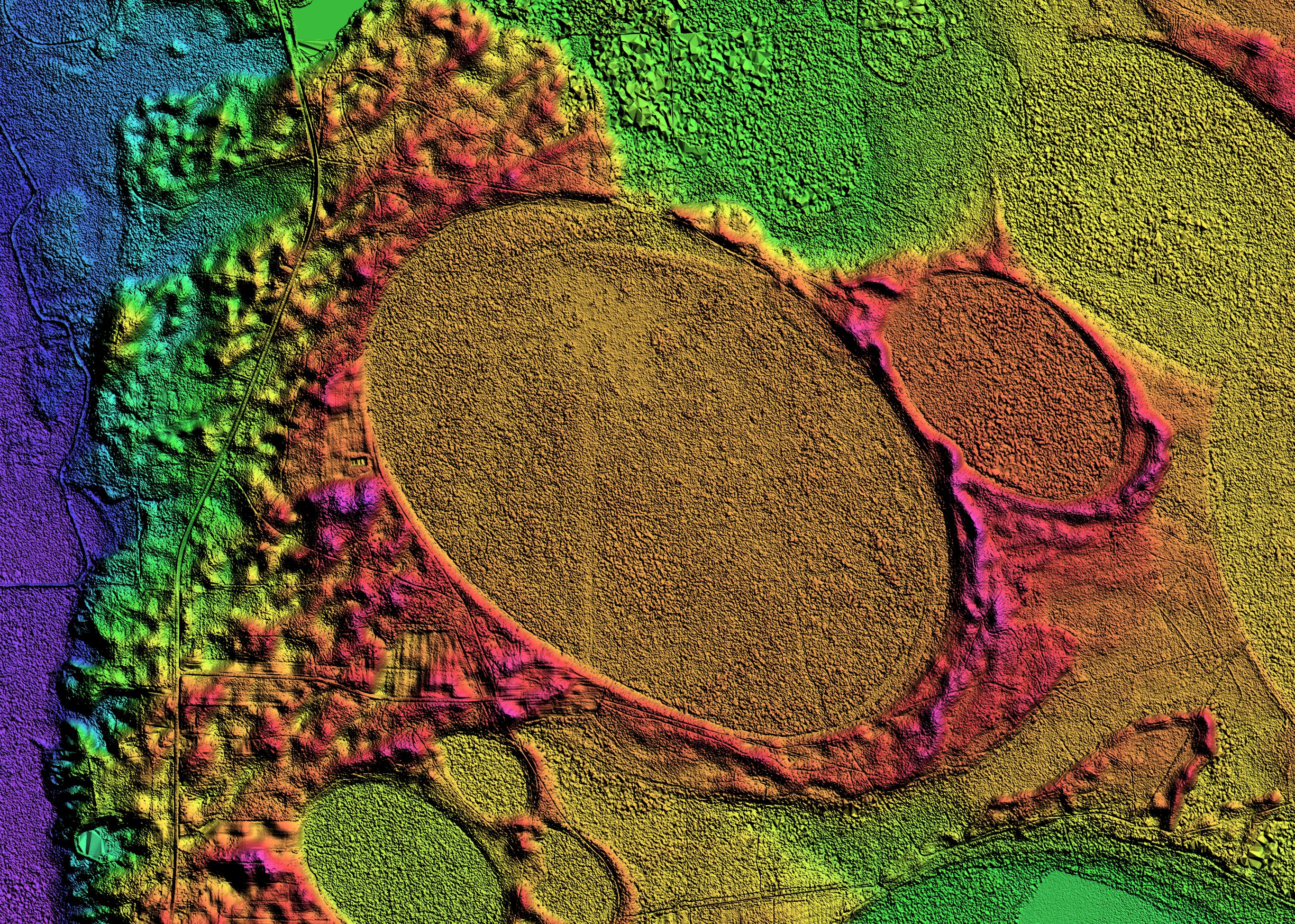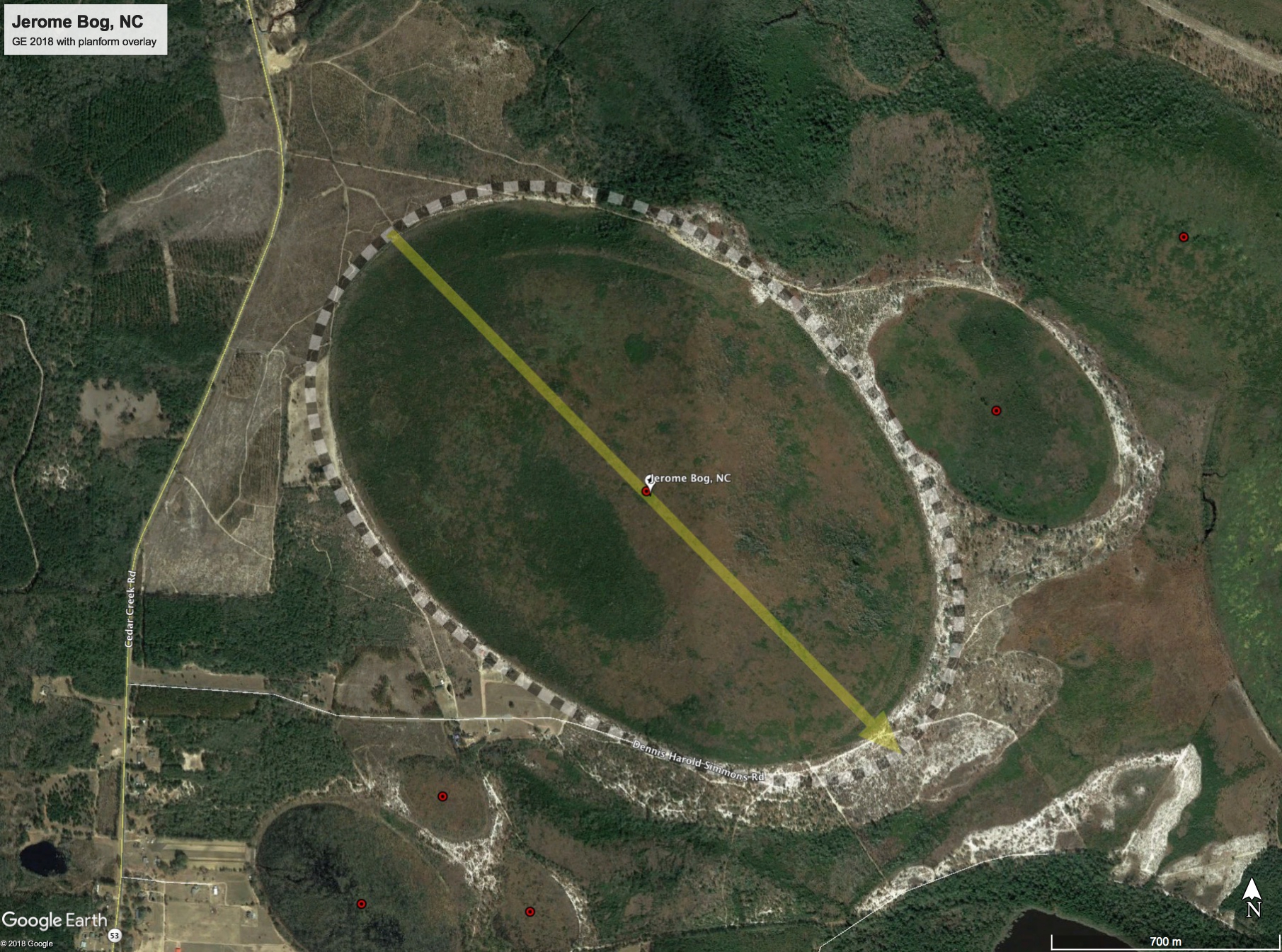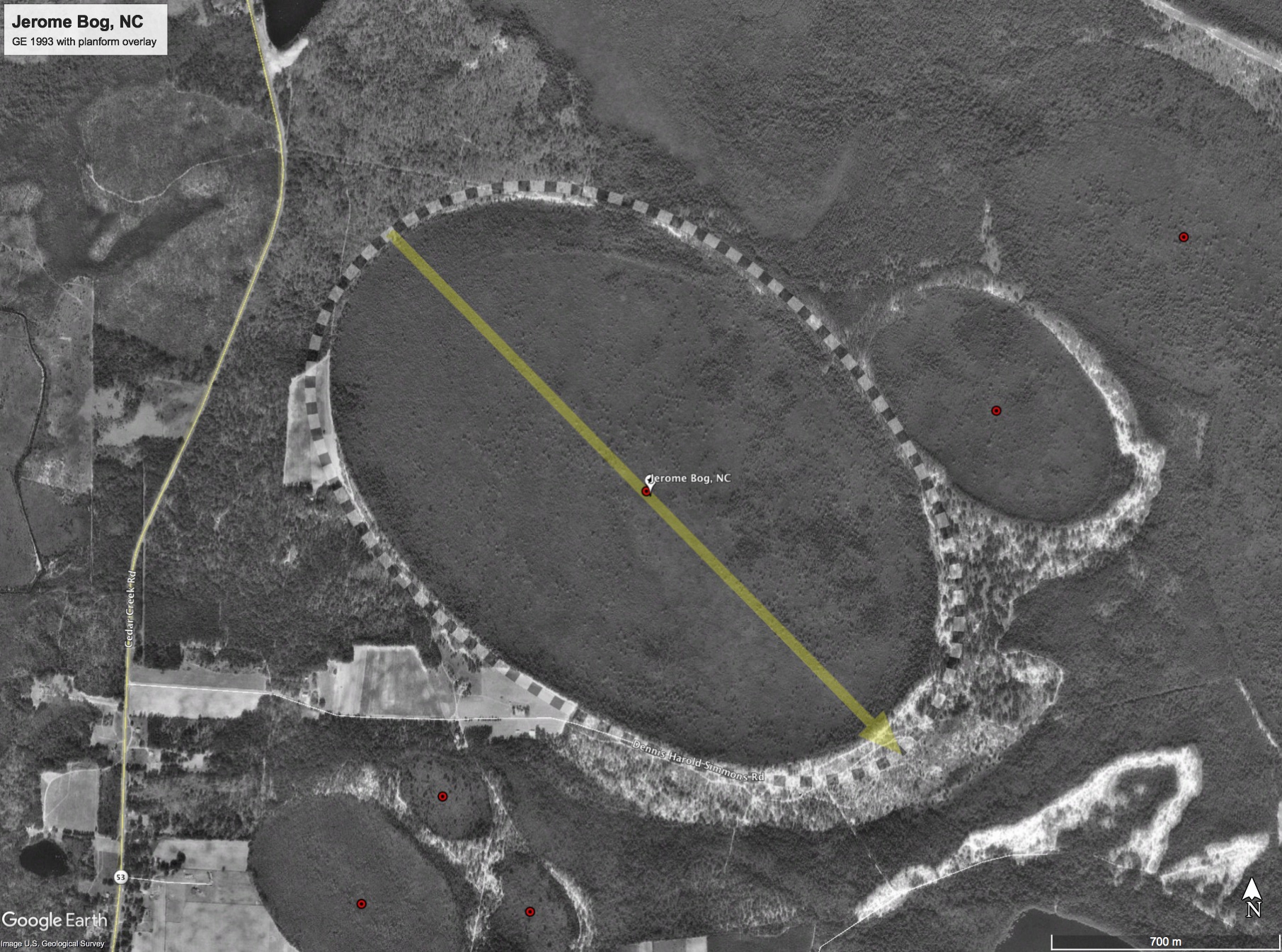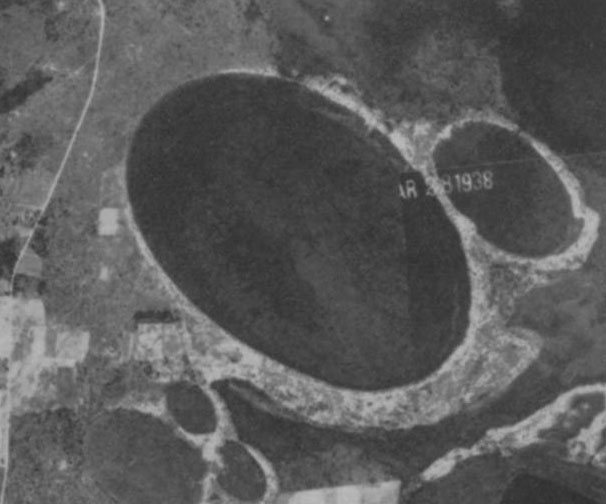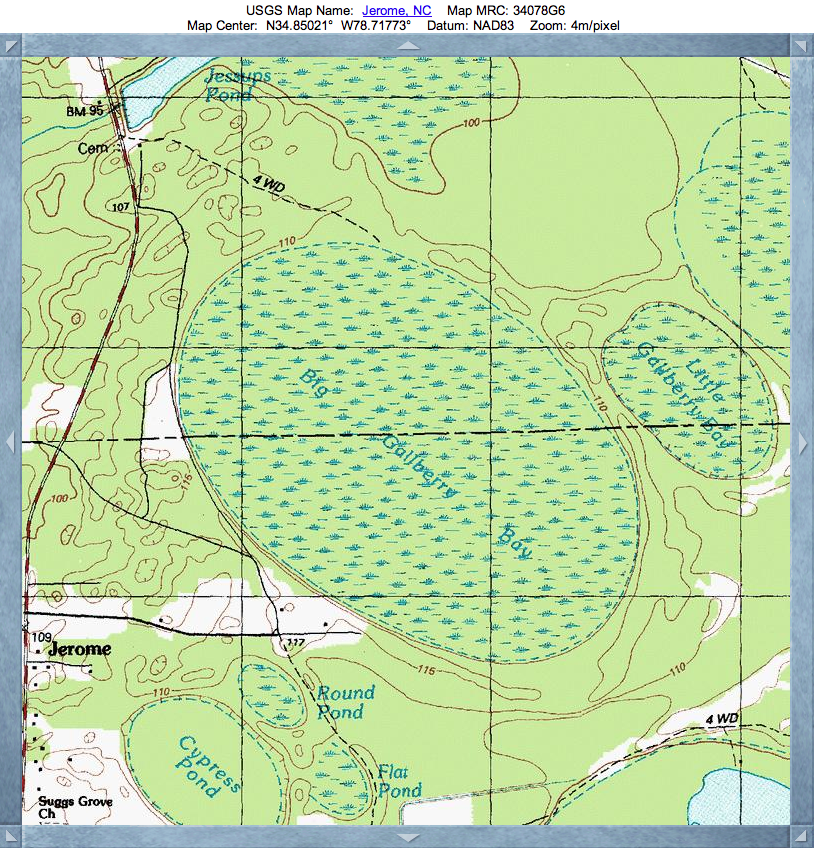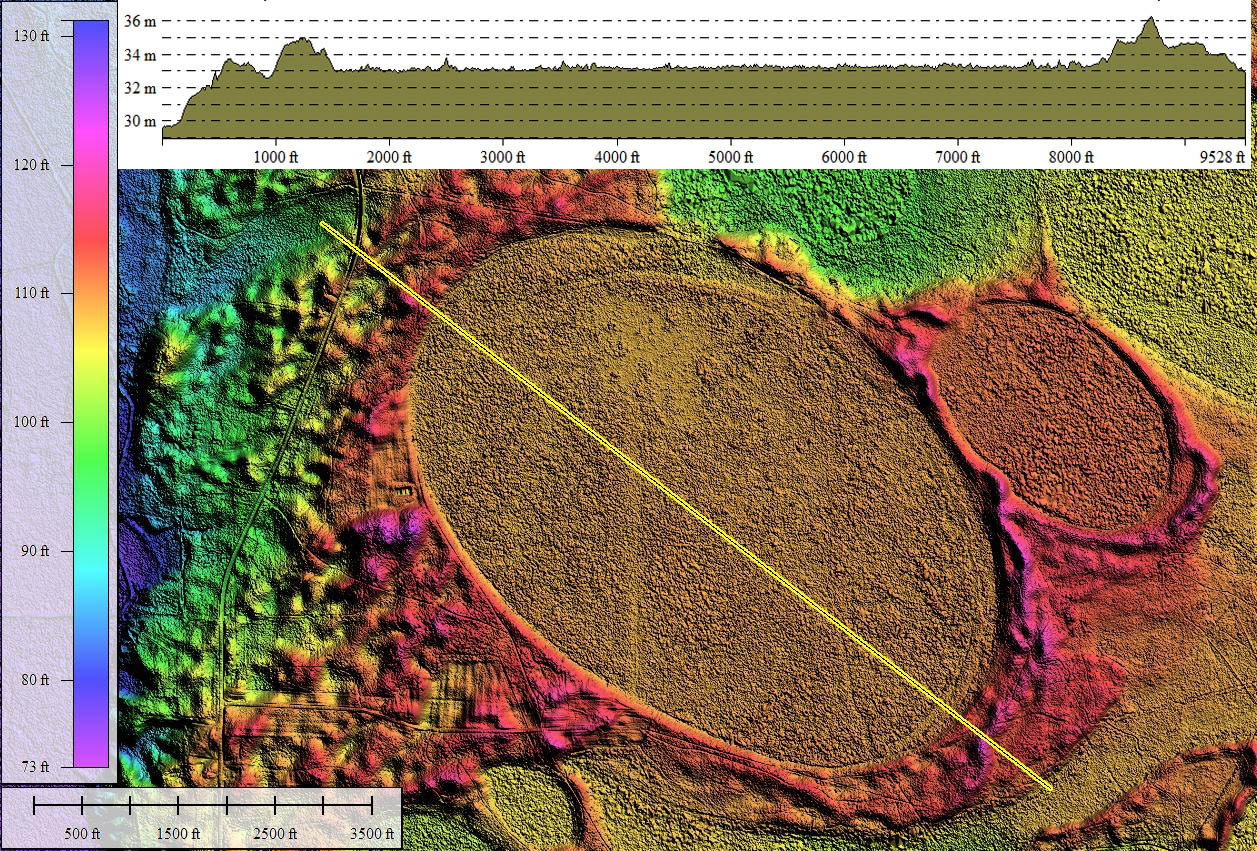Jerome Bog, NC
- Index #: 139314-3986
- Location: 34.84984071236133,-78.71687466086028
- Major: 2.25 km . . . Minor: 1.48 km
- Eccentricity: 0.754
- Area: 262.41 hectares
- Bearing: 135.56º
- Elevation: 33.64 m
- Archetype: bayCarolina
- Effective Diameter: 1,827.868 m
Copyright 2018 by Michael Davias
